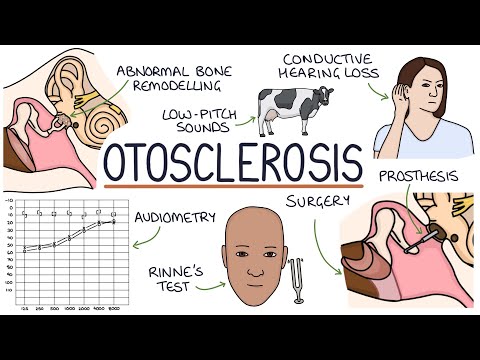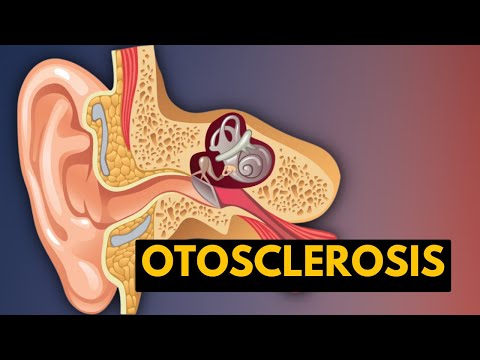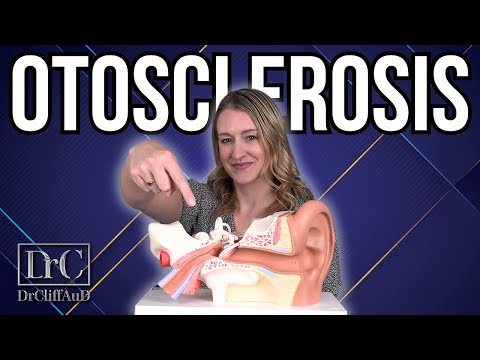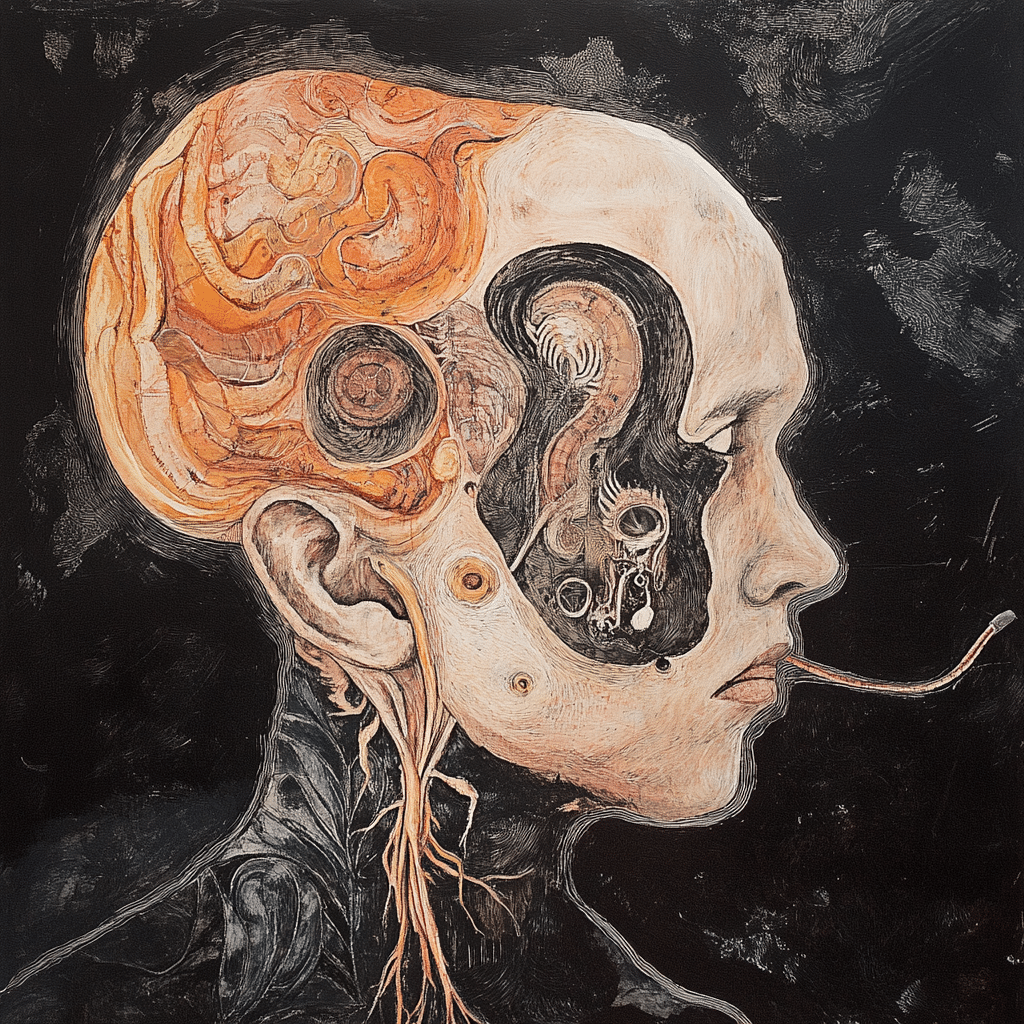Otosclerosis is a condition that can take a heavy toll on your life, especially when you’re trying to crush your fitness goals or just enjoy everyday activities. It’s characterized by abnormal bone growth in the middle ear, interfering with the stapes bone’s ability to move freely. This unfortunate situation leads to a gradual hearing loss that can surface between the ages of 20 and 40, with women at a higher risk. Understanding otosclerosis means tackling its symptoms, causes, and how you can regain control of your hearing and life!

Top 5 Symptoms of Otosclerosis to Watch For
1. Gradual Hearing Loss
The primary symptom of otosclerosis is a slow, gradual decline in hearing, particularly in the lower frequencies. You might start to notice it’s harder to catch the low rumble of your favorite Arnold film while you workout. That slow fade can sneak up on you, so pay attention!
2. Tinnitus
Ah, tinnitus – that ringing or buzzing sound in your ears that just won’t quit! This pesky symptom often forms a partnership with hearing loss and can become an unwelcome distraction during your workout sessions. Imagine trying to pump iron while your ears feel like they’re hosting a loud party!
3. Fluctuating Hearing
Some days, your hearing may feel sharp as a tack; other days, not so much. This fluctuation can be frustrating and confusing. It’s like going through different weights on every gym visit; sometimes you crush it, sometimes you struggle.
4. Balance Issues
Feeling dizzy or imbalanced isn’t your ideal scenario. Although it’s less common, this symptom can add to the challenges of living with otosclerosis. Remember, the last thing you want is to lose your balance while conquering that new powerlifting record.
5. Familial History
If you’ve got family members with hearing problems, it may suggest a genetic link. Knowing this can help you stay vigilant for any signs. It’s like being prepared when you see that big heavy weight on the bench – you know it’s time to take action!
Recognizing these symptoms is crucial for early detection and effective treatment. The sooner you know what you’re dealing with, the quicker you can hit your goals and reclaim your life!

The Underlying Causes of Otosclerosis
Understanding the causes of otosclerosis is like studying for a big exam; the more you know, the better prepared you are. The causes remain somewhat elusive, but researchers have identified several factors that might contribute to the development of this condition.
1. Genetic Predisposition
If otosclerosis runs in your family, it might mean you’re at a higher risk. Genetic mutations linked to bone formation could be at play. Think of it like a family resemblance where the plentiful muscles come from years of hard work – or, in this case, hard genetics.
2. Metabolic Factors
Have you ever heard of hypercholesterolemia? It’s a mouthful, but it refers to high cholesterol levels that could affect bone health, possibly leading to otosclerosis. So, if you’ve got high blood cholesterol, it’s wise to keep that in check while you’re trying to develop those shredded six packs!
3. Viral Infections
Past viral infections, especially the measles virus, may trigger this abnormal bone growth. It’s a reminder to prioritize your health and immunity, especially if you’re pushing hard in the gym.
4. Age and Gender Considerations
Otosclerosis typically strikes during young adulthood. And, if you’re a woman, you may find yourself at a greater risk! Knowing this helps you stay aware of any auditory changes as you hustle towards your fitness dreams.
5. Environmental Factors
Nutritional deficiencies and exposure to toxins might be part of the picture too. Make sure to fuel your body with what it needs! Avoiding junk and striving for a balanced diet is your best bet on this journey, whether you’re trying to build muscle or manage a hearing condition.

Exploring Related Health Concerns: How Otosclerosis Intersects with Other Conditions
Otosclerosis doesn’t operate in isolation. It can link up with various health concerns that may complicate your situation.
– Parasomnia
Ever wake up feeling like you were wrestling while asleep? Sleep disturbances often accompany otosclerosis. Increased stress from hearing loss can exacerbate conditions like parasomnia, where bizarre behaviors occur during sleep.
– Polyneuropathy
This condition affects multiple peripheral nerves, making sound processing and perception harder. Sound familiar? It can create extra challenges if you’re already tackling the obstacles imposed by otosclerosis.
– Metabolic Encephalopathy
This term refers to neurological issues linked to metabolic disruptions. Hearing loss could be impacting cognitive function more than one might think. It’s essential to connect body and mind as you strive to reach your fitness potential!
– Polyphagia
You might find yourself dealing with increased appetite as physical health wanes from otosclerosis. Stress and discomfort can lead to changes in eating habits. Keeping your nutrition on point can make all the difference as you face these challenges head-on.

Life-Changing Solutions for Managing Otosclerosis
Taking hold of your health when faced with otosclerosis requires a strategic approach. Here are some effective and life-changing solutions you should consider.
1. Hearing Aids
Various brands, like Phonak and Oticon, offer stellar hearing aids specifically crafted to help with otosclerosis-related hearing loss. These devices make a world of difference, enhancing quality of life with every workout and beyond!
2. Surgery
If you’re dealing with moderate to severe cases, a stapedectomy performed by reputable specialists may restore your hearing. For example, Dr. John H. P. B. Harris is known for utilizing advanced surgical techniques that can change lives and lift spirits!
3. Cochlear Implants
In situations where traditional hearing aids don’t cut it, cochlear implants might have your back. Brands like Cochlear Limited provide innovative devices to help tune your life back into high frequency.
4. Support Groups
Join groups like the Hearing Loss Association of America. Connecting with others who understand what you’re going through can provide emotional support and practical tips. It’s like having a workout partner who knows your grind!
5. Lifestyle Adjustments
Don’t underestimate the power of a balanced diet and regular exercise. Engage in mindful practices such as yoga and meditation. They can help you tackle the emotional toll associated with hearing loss while boosting your overall wellness.

Embracing Change: The Future for Those with Otosclerosis
Navigating life with otosclerosis calls for resilience and a proactive mindset. While this condition brings unique challenges, awareness is power. By understanding the symptoms, associated health concerns, and available treatment options, you can empower yourself and take on life fiercely!
Utilize the solutions available – the path to managing otosclerosis may be steep, but it’s conquerable. With dedication and a strong community, you can maintain meaningful conversations, emotional balance, and a higher quality of life. Embrace change, ignite your journey, and stay motivated!
Your fitness dreams and aspirations are worth it, so don’t let otosclerosis stand in your way. Get informed, act decisively, and keep pushing towards those goals like the champion you are!
Feel free to check out additional resources, such as natural Remedies For constipation, and stay active whether you’re curious about The average mile time or looking for the latest on your fitness journey. Remember, it’s all about breaking barriers and pushing forward!
Fun Trivia and Interesting Facts about Otosclerosis
Understanding Otosclerosis: The Silent Progression
Otosclerosis, a condition primarily affecting the bones of the inner ear, can sneak up on you. It causes hearing loss when the stapes, the tiny stirrup-shaped bone in your ear, becomes immobilized due to abnormal bone growth. Did you know that otosclerosis often starts in young adulthood? In fact, it’s most commonly diagnosed between the ages of 20 and 40. This is the time when many are busy making major life decisions, like applying for a jumbo mortgage to buy their first home. Hearing issues might be the last thing on your mind as you’re balancing bills and work commitments!
Who’s More Likely to Face Otosclerosis?
Interestingly, otosclerosis seems to have a familial link; it can run in families. If a close relative has it, your chances of developing the condition go up. Plus, women are more prone to it during pregnancy, suggesting that hormonal changes could play a role. In pop culture, we often get a taste of Pittsburgh’s gritty charm through shows like Bubbles The Wire, which entertain but may not prepare us for real-life struggles, such as health concerns like otosclerosis. So, while you sip that creamy coconut drink, remember that looking after your hearing is just as important as indulging in your favorite treats!
Solutions and Hope
While otosclerosis can be a thorn in your side, it doesn’t have to define your life. Through specialized treatments, such as hearing aids or surgical interventions, many people can reclaim their hearing. Moreover, resources like the Mounjaro dosage chart can guide those considering weight management as they navigate their health journeys. And who says all the stressful topics have to be dreary? Just like knowing When Does Starbucks close can make your caffeine runs smoother, understanding your options for treating otosclerosis can empower you and add a sprinkle of positivity to your health routine.
So there you have it! Whether you’re cracking jokes or facing some tougher issues, always remember to cherish your auditory health. It’s what keeps our lives vivid and connected to the world around us.



























